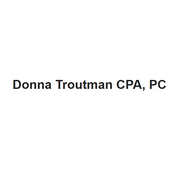
There are a variety of tax deductions for businesses, but one of the most popular is vehicle expense. There are two methods available to calculate a deduction for your business auto usage: actual expenses and the standard mileage rate. To help you better prepare for next year's business tax return, here's a closer look at each option.
Actual Expense Method
What Is the Actual Expense Method?
This calculation method revolves around all expenses related to the vehicle and, therefore, requires tracking all of your everyday costs of operating the vehicle.
What Expenses Qualify & How Do I Track Them?
The qualifying expenses include oil changes, repairs, gas, insurance, license fees, and a deduction for the depreciation of the vehicle. To stay on top of all the costs, keep detailed receipts for all expenses related to the vehicle throughout the year. The IRS requires thorough recordkeeping for all expenses claimed.
How Do I Calculate My Actual Expenses?
Figuring the deduction for business tax returns requires knowing the total miles driven each year, the portion of business miles recorded, and the sum of all costs of operating the vehicle. First, determine the percentage of company-use miles by dividing the number of business miles by the vehicle's total mileage for the year. The business use percentage is then multiplied by the total cost of operating the vehicle to arrive at the deductible portion of the actual expenses.
Standard Mileage Method
What Counts as Business Mileage?
 Business mileage includes all miles driven for business purposes on an owned or leased vehicle. Common situations include driving to meet a client or running company-related errands, like picking up supplies. It's important to note that the standard mileage deduction must be used the first year of vehicle usage to utilize the method again throughout its life span.
Business mileage includes all miles driven for business purposes on an owned or leased vehicle. Common situations include driving to meet a client or running company-related errands, like picking up supplies. It's important to note that the standard mileage deduction must be used the first year of vehicle usage to utilize the method again throughout its life span.
How Do I Track This?
Tracking standard mileage for a business tax return is fairly straightforward. You need to jot down the mileage at the beginning of the year and again at the end. If you're using a personal vehicle for business travel, mark down the vehicle's mileage when beginning the trip and once it's finished. While you can write down the information manually, QuickBooksⓇ also offers a mileage tracker to customers through their smartphone app.
How Do I Calculate This Using the Federal Rate?
Business-related mileage deductions vary by year. For 2019, the federal government allows a deduction of 58 cents per mile. To determine your deduction using the standard mileage method, simply multiply the total business miles driven by the current rate.
For qualified tax help in the Lewisburg, PA, area, turn to the team at Donna J. Troutman, CPA, PC. The full-service certified public accountant firm offers a variety of business accounting services including tax preparation, QuickBooks software training, tax planning and consulting. Visit them online to learn more about their specialty areas, and request assistance with your business tax return today at (570) 523-7337.
About the Business
Have a question? Ask the experts!
Send your question

